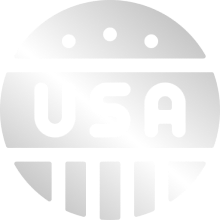If you care about your vehicle's exterior, a professional protective coating is a valuable investment. Paint protective film and ceramic coating help protect your car's paint, reducing the risk of damage. While both methods can preserve your vehicle's value and enhance its appearance, they vary in many ways, serving different purposes. Learn about the differences between ceramic coating vs. PPF and how to make the most beneficial decision for your vehicle. In most cases, the best choice is a combination of professional-grade PPF and ceramic coating for total paint protection.
What Is Car Ceramic Coating?
A ceramic coating is a form of liquid polymer. Once applied to a vehicle, it creates a chemical bond with the paint. It has water-resistant qualities and repels pollutants. It can help protect against:
- Chemical stains or etch marks from acidic contaminants.
- Fading from ultraviolet exposure.
- Harsh elements.
Ceramic coatings seep into any existing imperfections to create a flat surface coating. You may also see it called "nano-ceramic," as the molecules are microscopic.
What Is Paint Protection Film?
A PPF layer, sometimes called clear bra, also helps protect your vehicle's paint. It consists of a thin, transparent polymer or polyurethane material. Its original application was for U.S. military helicopters, and has since become standard protection for everyday vehicles. PPF forms a protective layer on a vehicle's surface to guard against:
- Scratching and chipping.
- Ultraviolet light.
- Acid corrosion and oxidation.
- Bird droppings and bug splatters.
- Harsh elements.
- Swirl marks.

How Are PPF and Ceramic Coatings Similar?
PPF and ceramic coatings have many similarities. Both protect your car's exterior from environmental damage, and both contribute value to your vehicle should you choose to resell it. While PPF and ceramic coatings offer different advantages, they both keep your car looking newer longer. With either option applied, your car's paint will resist fading, chemical stains and etch marks.
Car Ceramic Coating vs. PPF: Differences
Though they seem similar enough, PPF and ceramic coatings are different in their characteristics, cost and the purposes they serve. One notable difference is the material — ceramic coatings are liquid while PPF is a solid, polymer material. As a result, application methods differ. A professional will use a sponge to apply ceramic coatings and a hot air machine to apply a PPF layer. They also vary in function, advantages and cost.
Advantages of PPF
PPF offers protection against small rock chips, scratches, swirl marks and hard water spots, as well as ultraviolet light, acid rain, bird droppings, corrosion and mineral deposits. PPF's most remarkable advantage is its self-healing properties. After your PPF layer suffers a scratch, all you have to do is apply heat and the surface will mend itself. The results last up to a decade, and you can remove it at any time.
Advantages of Ceramic Coating
Ceramic coatings make your vehicle shinier and easier to wash. The hydrophobic surface repels contaminants with simple soap-and-water washing. Like PPF, it also protects against ultraviolet damage, fading, oxidation and some types of etching. It also creates a high-gloss finish, improving the overall appearance of your vehicle.
Note that if you only apply a ceramic coating, your vehicle can still retain scratches from high-impact rocks and other items. In addition, you'll still have to wipe away water spots and wash your vehicle with a ceramic coating applied.
PPF vs. Ceramic Coating Cost
If you're wondering about ceramic coating vs. PPF price, keep in mind that the prices of each will vary. Costs depend on the original state of the vehicle, the application method and the area coverage desired.
Ceramic Coating Cost
The cost of a ceramic coating depends on its application method and grade. You can find do-it-yourself ceramic coating kits, which are less expensive but not as advanced as professional applications. You can apply these on your own, spraying the paint protection, applying the glass protection and finishing with a maintenance spray. The paint protection will last for about six to 12 months, and the glass protection will last for about 12 to 24 months. Be sure to wash your vehicle before applying the coating.
Many vehicle owners prefer to opt for a professional ceramic coating service. The cost of a professional-grade ceramic coating depends on the level of damage on your vehicle's surface. If your vehicle has heavy swirls and scratches on its surface, it will require a multi-stage correction process. It costs less to apply a ceramic coating to a brand new car with minimal existing damage.
However, even for a brand-new vehicle, prep work is necessary before having a professional-grade coating applied. The in-house experts will perform a chemical decontamination and paint assessment beforehand.
PPF Cost
The cost of PPF also depends on your vehicle's level of need. You can choose from a range of PPF packages to cover various sections of your vehicle, including:
- Front bumper
- Partial front
- Full front
- Driver's side
- Full body
To preserve your vehicle's value, you may want to opt for full-body coverage. However, the front bumper and windows tend to take the brunt of debris and damage, so partial coverage in these areas can make a significant difference.
What's the Best Paint Protection for Cars? Ceramic Coating vs. Clear Bra
Which is better — PPF or ceramic coating? In reality, a pairing of ceramic coating and PPF is the best protection available.
First, a professional will prep your vehicle with a chemical decontamination. They'll then apply PPF where you choose, often on the most vulnerable parts of your vehicle, to protect the paint from chips and scratches. Afterward, they'll apply ceramic coating to the entire vehicle. It will bond to the factory paint and PPF layer, offering protection against stains, fading and chemical etching. The ceramic coating also extends the PPF's effective lifespan.
The result will be a paint job resistant to all kinds of wear and tear, with a slick and shiny finish. The effects will be visible on Day One and last for years to come. You'll have a more attractive, easier-to-wash vehicle that will continue looking like new for a long time. If you want to preserve your vehicle's factory or post-factory paint, choose a combination of PPF and ceramic coating.
Contact Sigma Kore for PPF or Ceramic Coatings
A vehicle is a significant long-term investment. The longer you can keep it looking brand-new, the better. PPF and ceramic coatings allow for that. They protect your vehicle's paint from the harsh elements outside, including debris, chemicals, oxidation, ultraviolet light and extreme temperatures. Without any protective coating, your vehicle's paint will take the full force of this damage.
If you're looking for professional-grade PPF or ceramic coating, consider Sigma Kore. At Sigma Kore, we offer an unmatched 24-hour turnaround on either service, including all necessary prep work. We also supply consumer-grade kits so you can keep your vehicle in top condition longer. We offer free shipping on orders over $40. To learn more about our vehicle protection products and services, contact us today.










